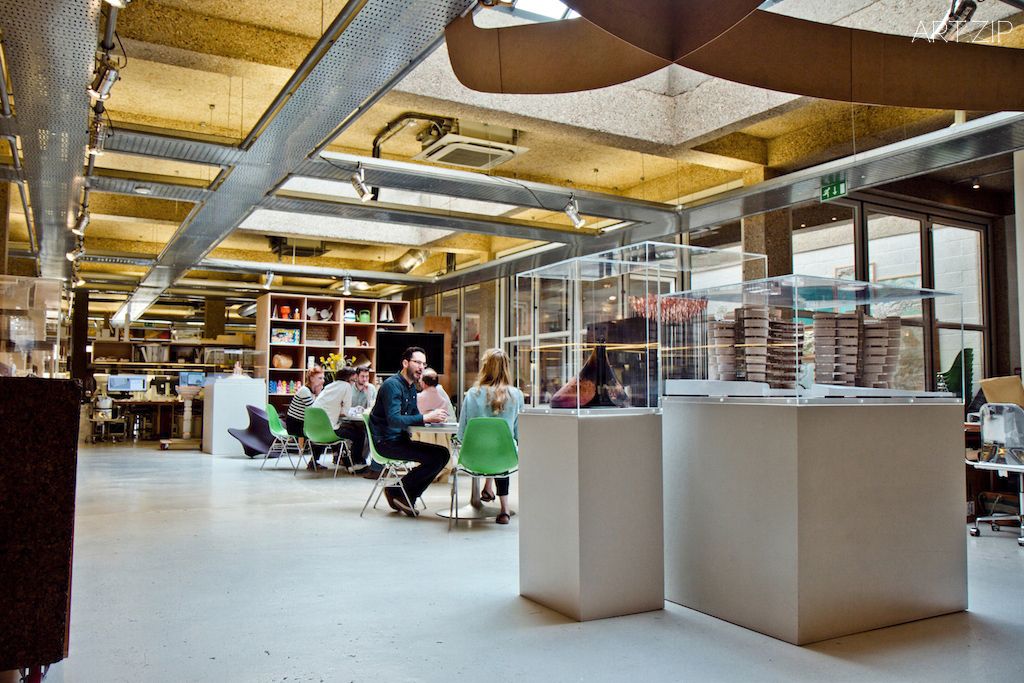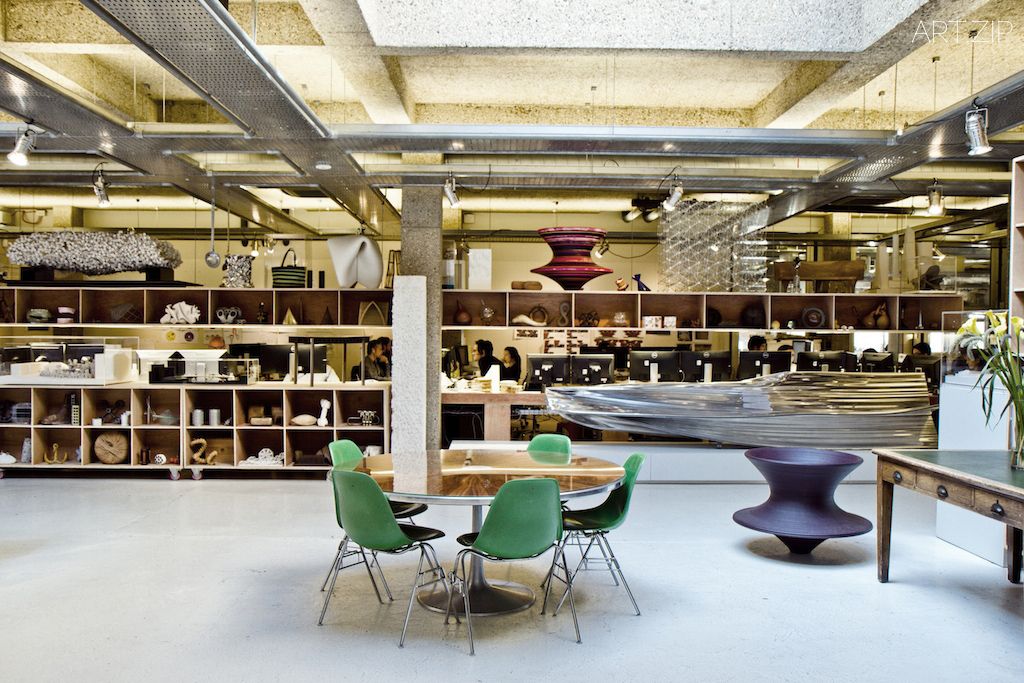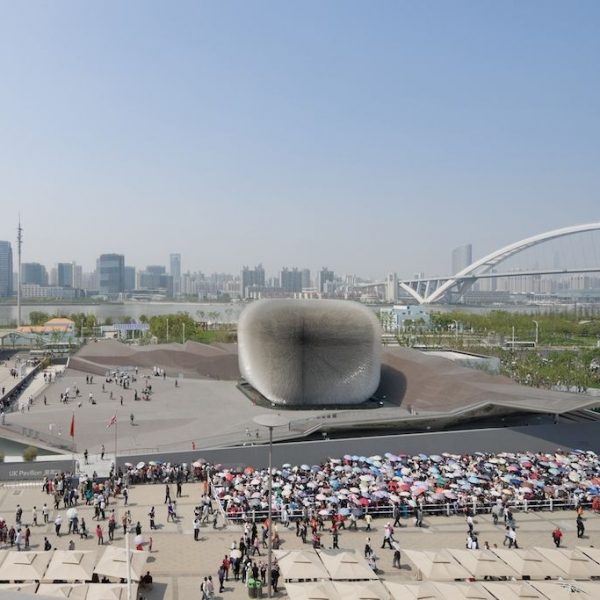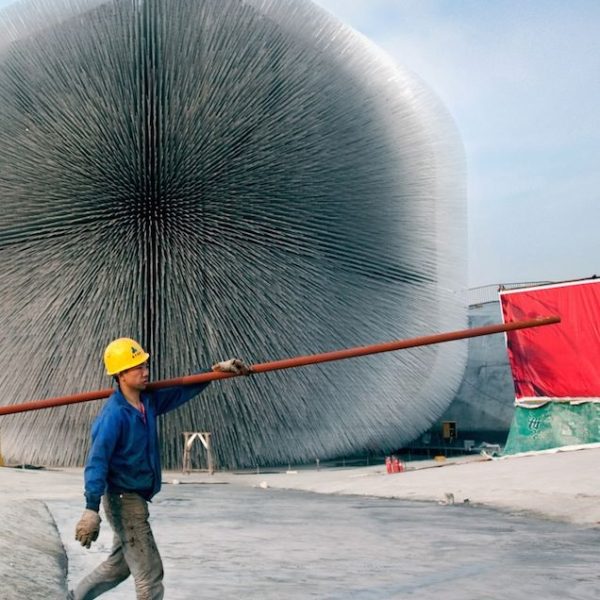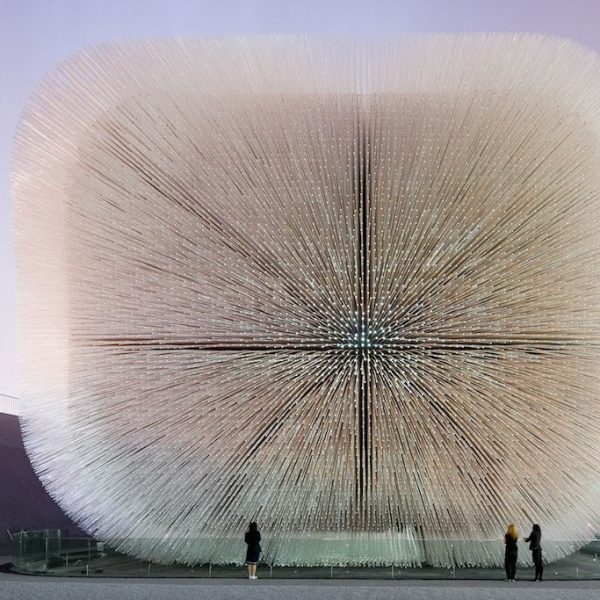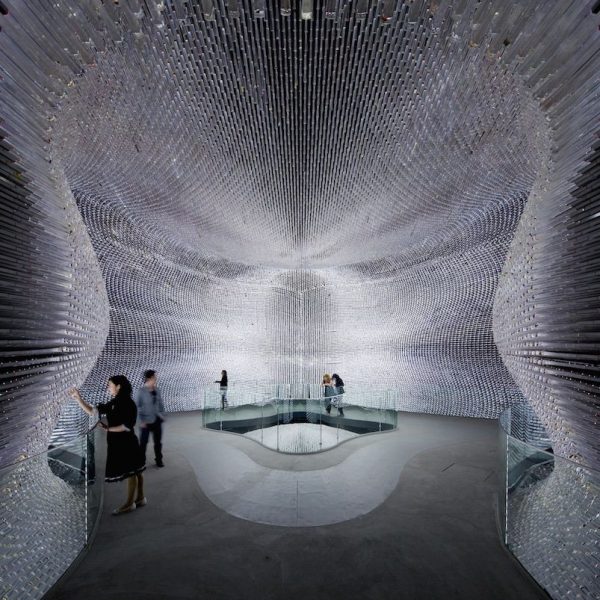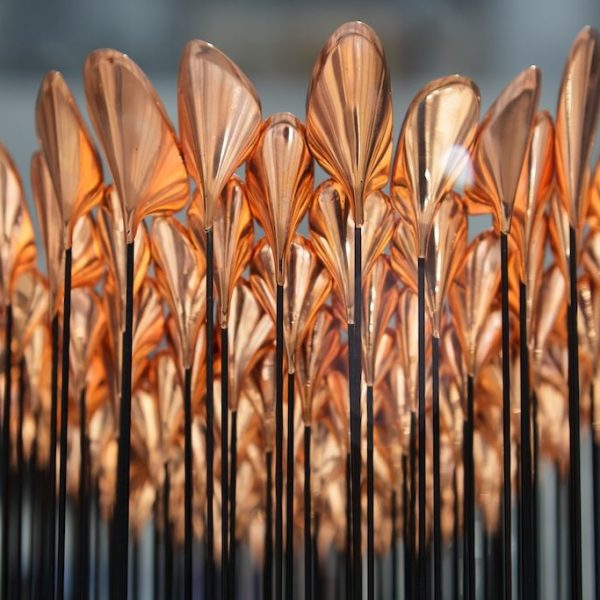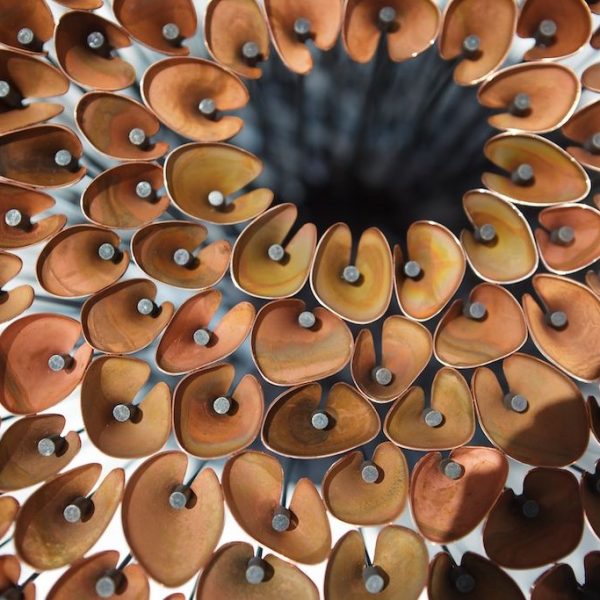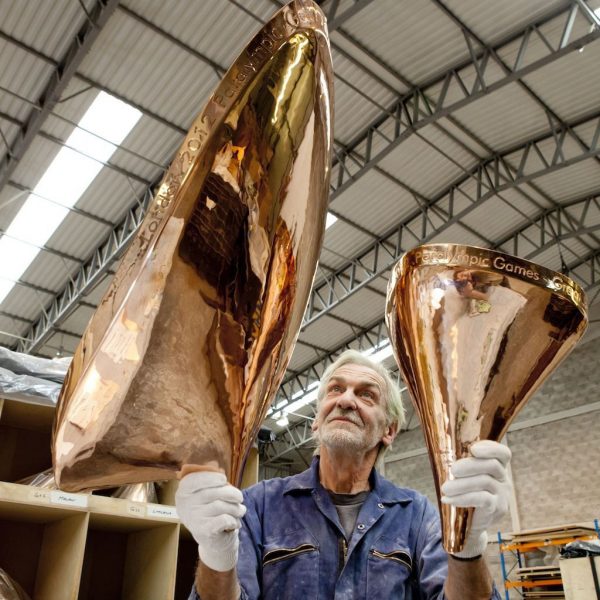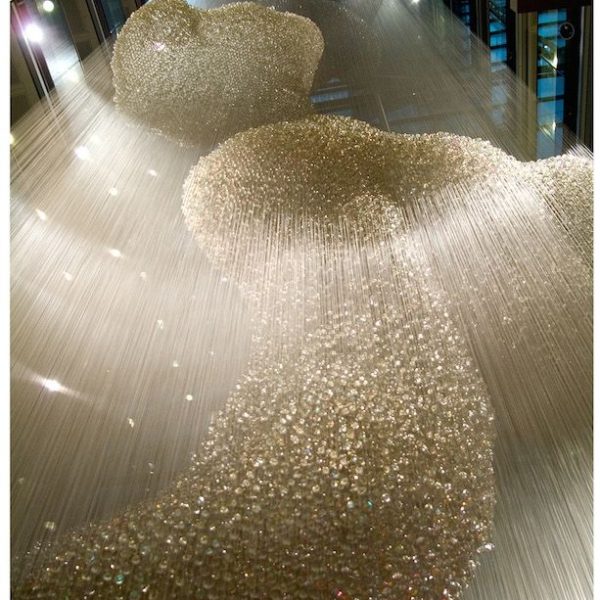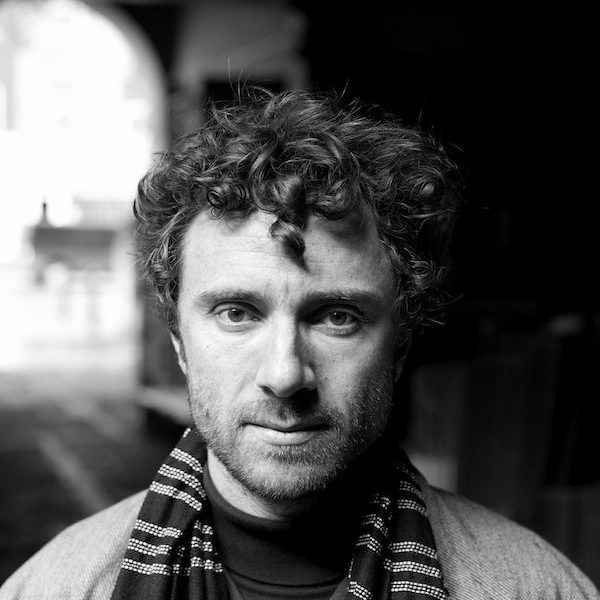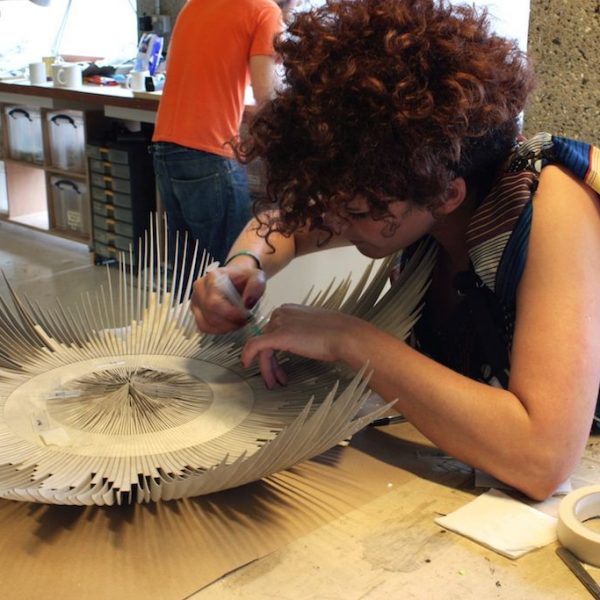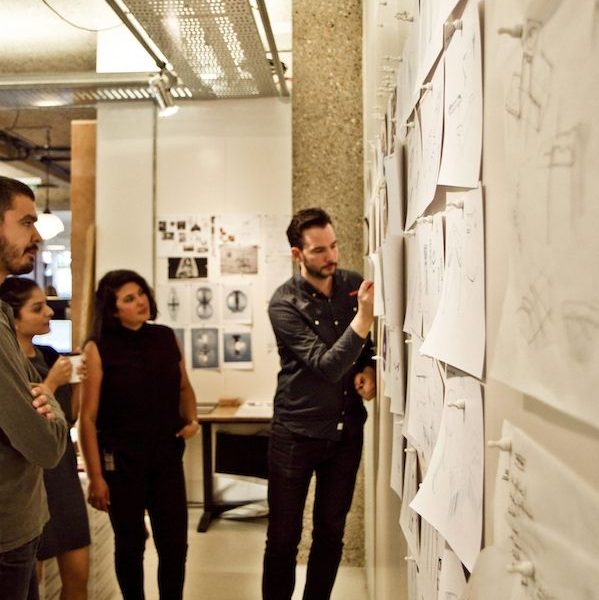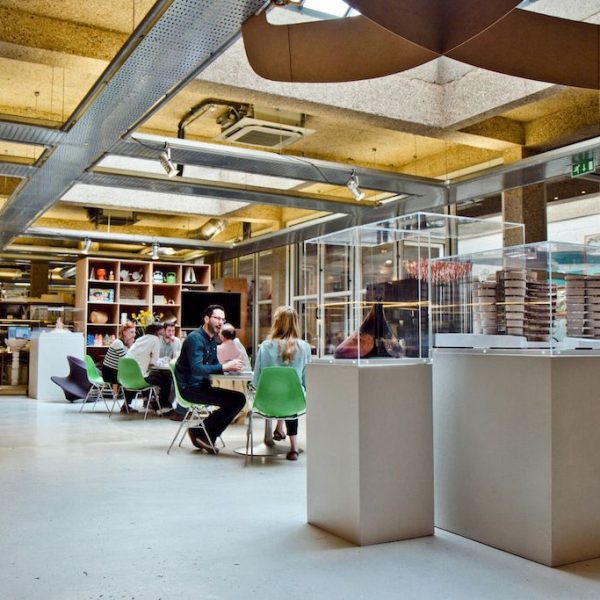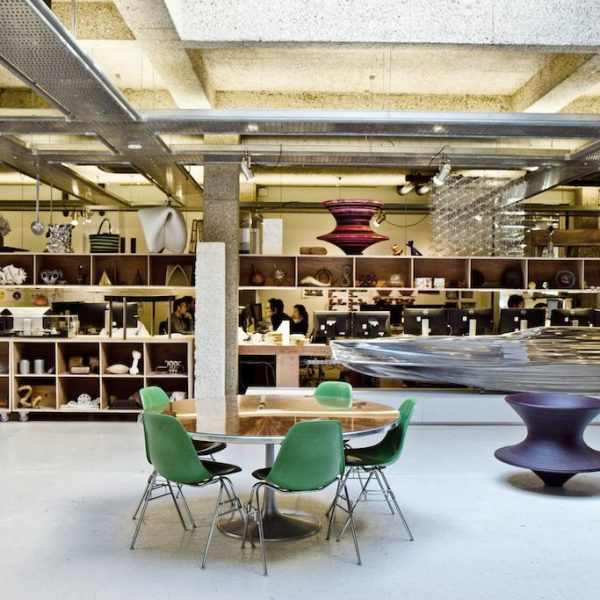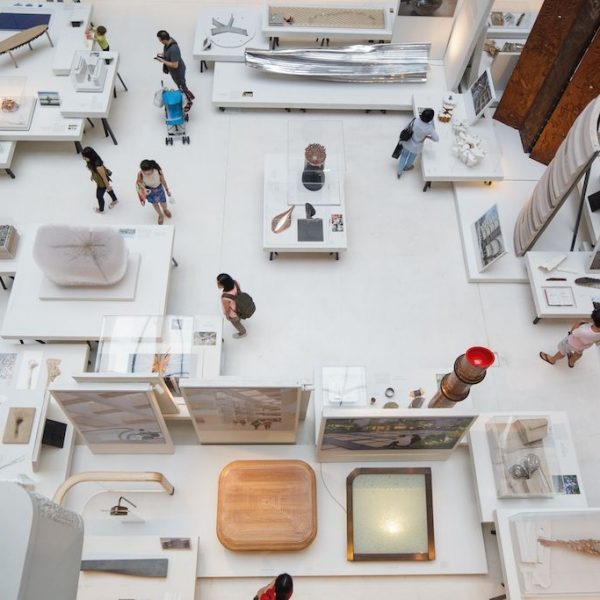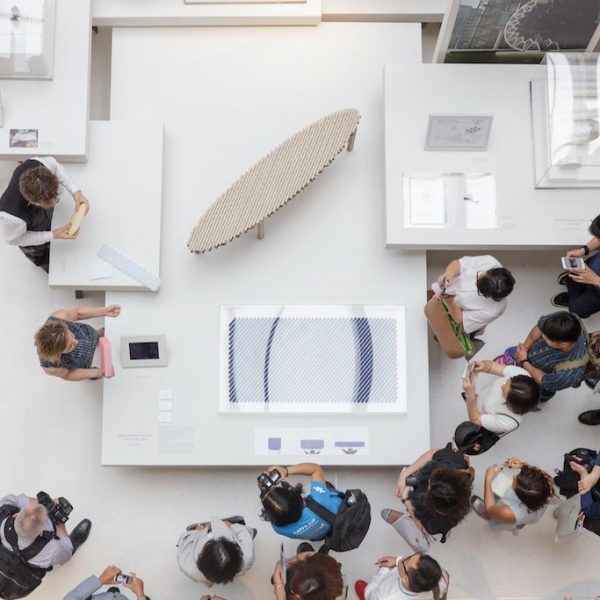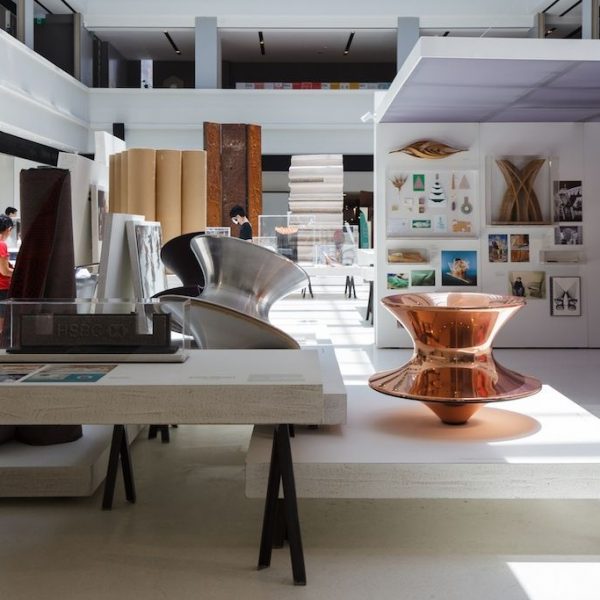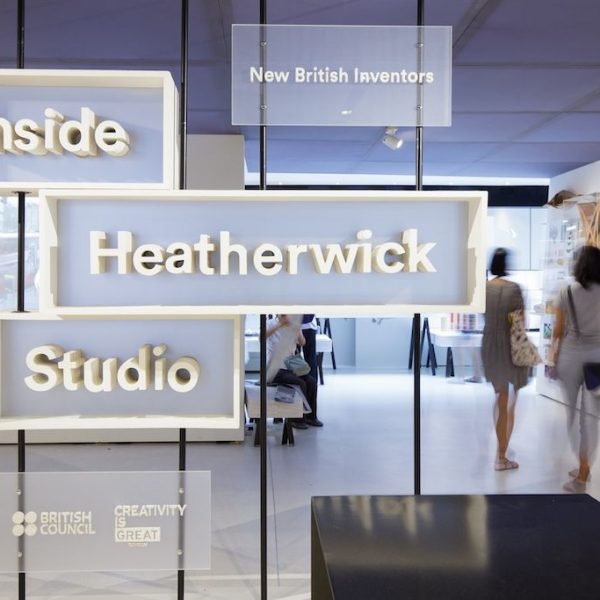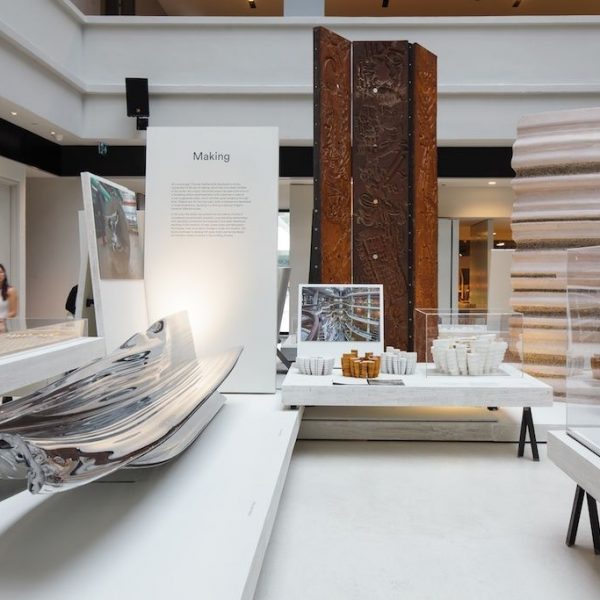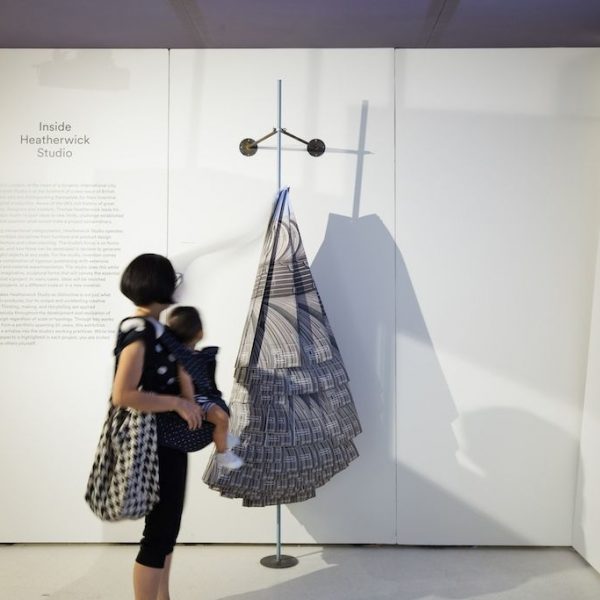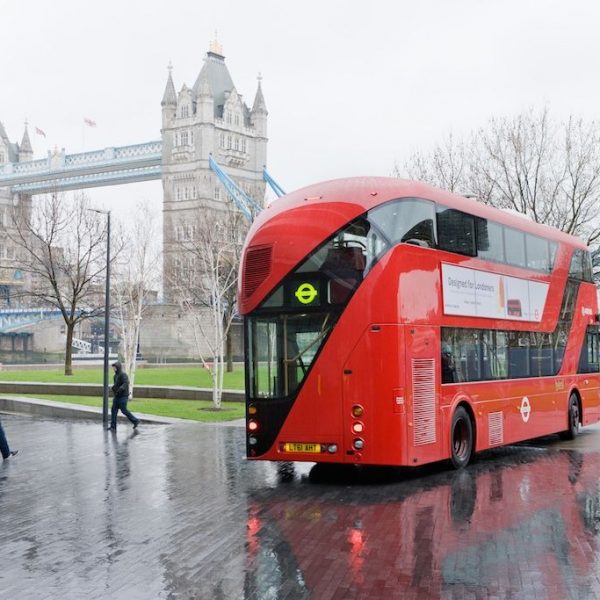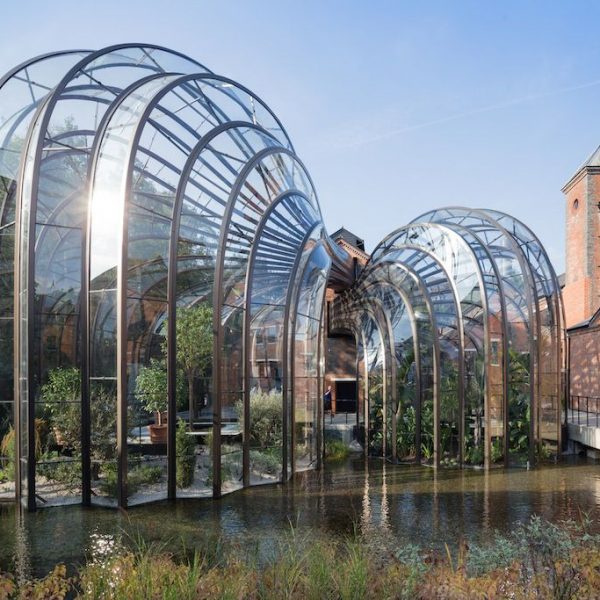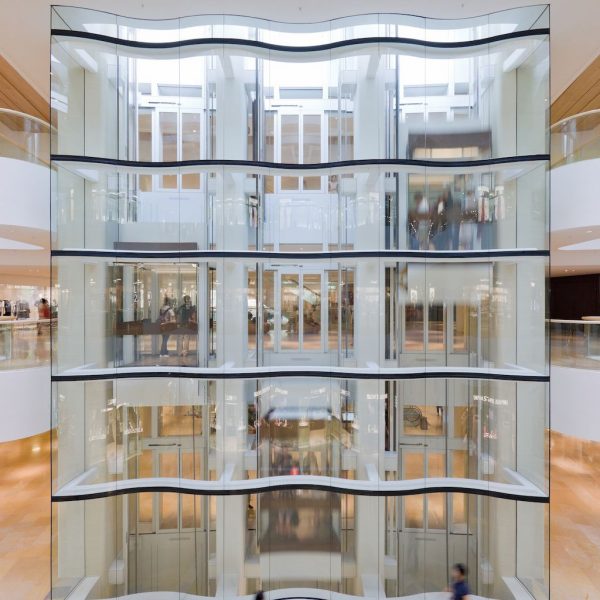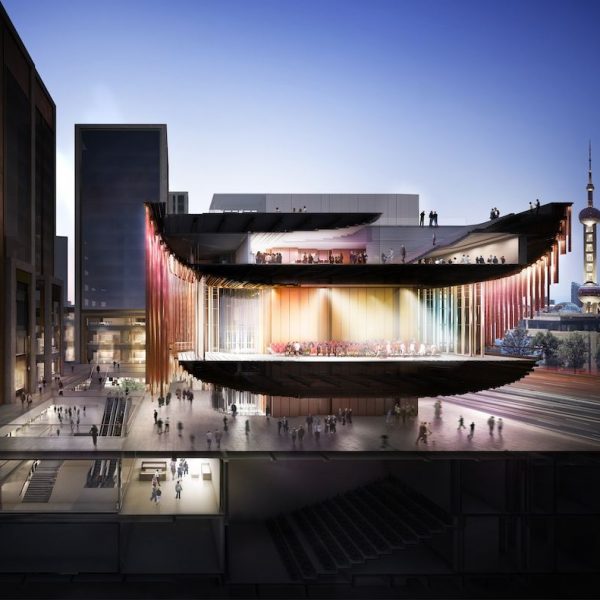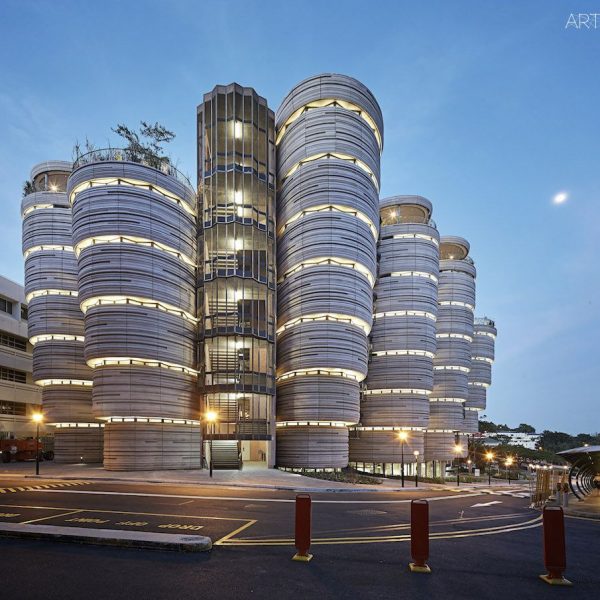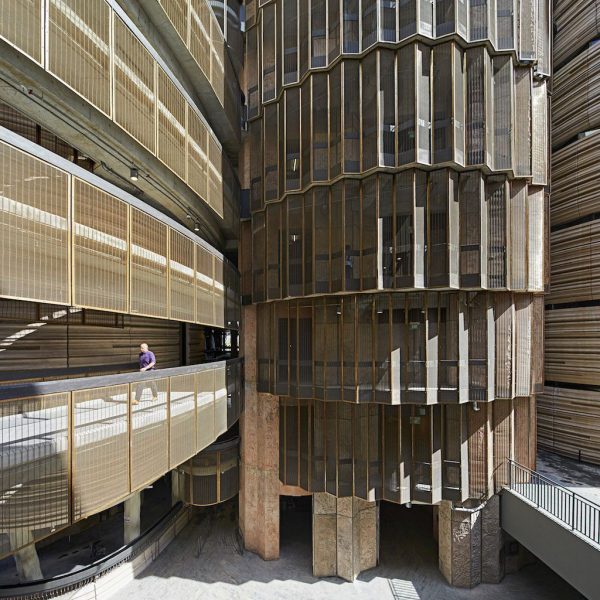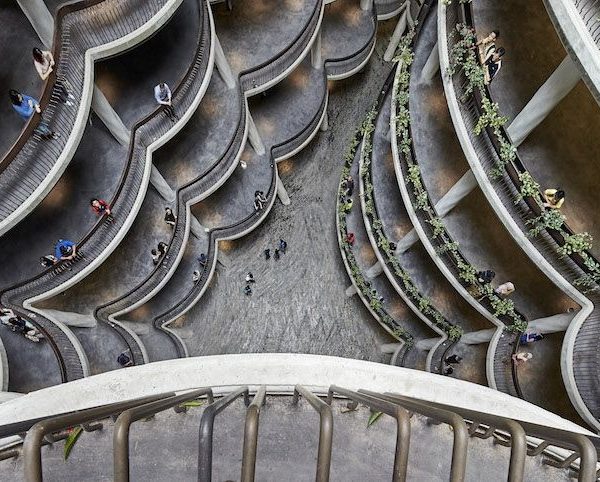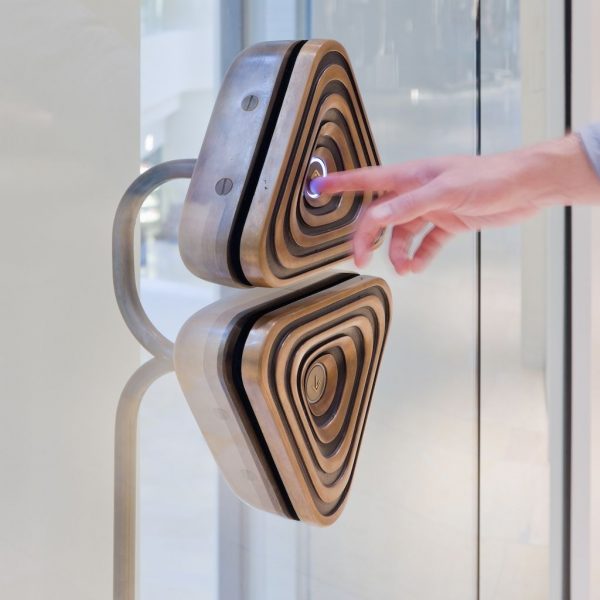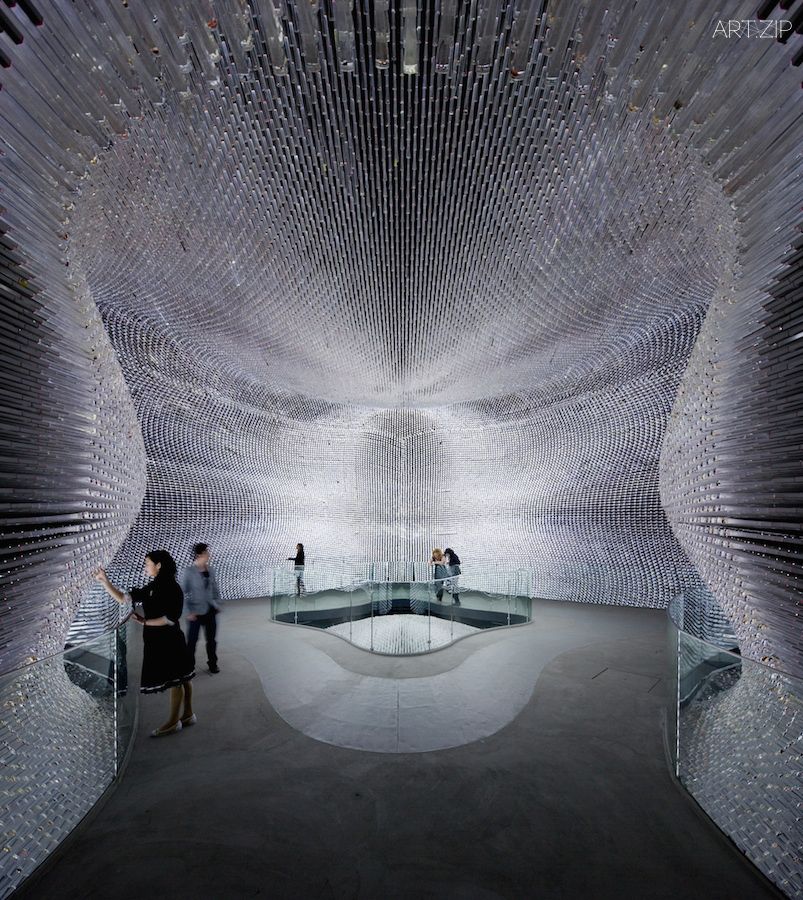
TEXT BY 撰文 x JESC BUNYARD 傑西·本雅德 LI BOWEN 李博文
TRANSLATED BY 翻譯 x KE QIWEN 柯淇雯
IMAGES COURTESY OF 圖片 x HEATHERWICK STUDIO 赫斯維克工作室
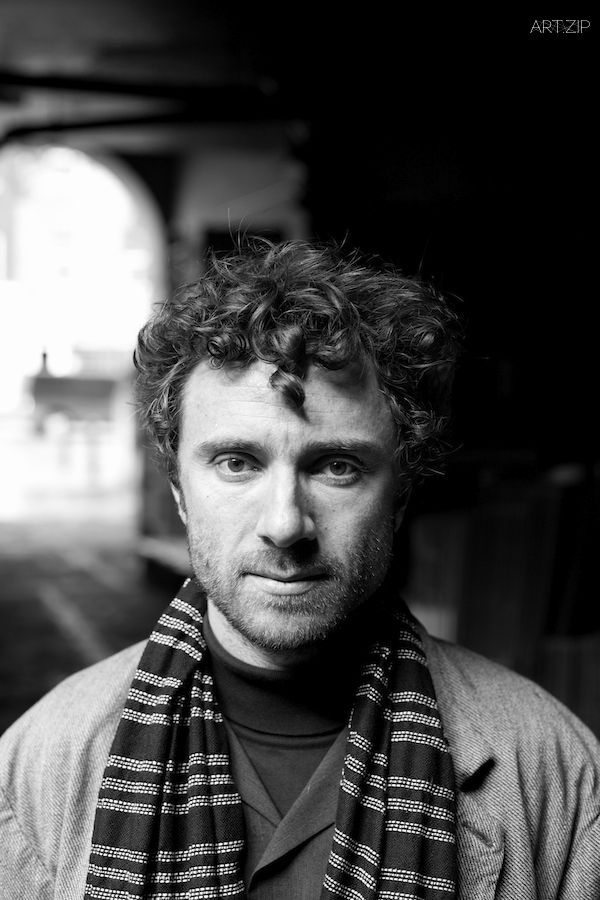
Today, a major exhibition New British Inventors: Inside Heatherwick Studio was touring in mainland China supported by the British Council. The exhibition, curated by Kate Goodwin, Head of Architecture and the Drue Heinz Curator at the Royal Academy of Arts, London, features projects and design process from 20 years of Heatherwick Studio, capturing the studio’s spirit of discovery, demonstrating their imaginative and entrepreneurial approach to design.
Heatherwick Studio was formed in 1994, since then the founder Thomas Heatherwick has emerged as one of Britain’s most gifted and imaginative designers. He was also granted many titles: Honorary Fellow of the Royal Institute of British Architects; Royal Academician by the Royal Academy of Arts; the youngest Royal Designer for Industry; Commander of the Order of the British Empire (CBE) for services to the design industry and many more. Heatherwick and his team have established a unique design practice with a spirit of discovery and invention at its heart, and placing the Studio at the forefront of a wave of New British Inventors. Notable projects include the Olympic Cauldron for the 2012 Olympic Games, the award winning UK Pavilion for the Shanghai World Expo 2010, and a reimagining of London’s famous red double-decker bus.
Neil Hubbard, senior project designer of Heatherwick Studio, joined in 2005. He witnessed the evolvement of the studio from the initial to the present strong team of over 160 architects, designers and makers work from a combined studio and workshop in the UK. On behalf of Heatherwick Studio, here Hubbard and Heatherwick will bring us into the Studio.
《新世代英倫創造:走進赫斯維克工作室(New British Inventors: Inside Heatherwick Studio)》是由英國文化協會呈獻的中國巡迴展覽。展覽由英國皇家藝術學會策展人凱特·古德溫(Kate Goodwin)策劃,回顧了赫斯維克工作室過去20年的項目作品和設計過程,旨在挖掘工作室的探索精神,展示他們富於想像力和創造力的獨特設計。
赫斯維克工作室成立於1994年,創始人托馬斯·赫斯維克(Thomas Heatherwick)被譽為英國最具天賦及想像力的設計師之一,他還擁有多個頭銜:英國皇家建築師協會榮譽會員、皇家院士以及皇家設計師,更榮獲了大英帝國司令勳章等等。他的設計以其精湛程度、創新性和原創性著稱,他領導團隊創建了一種以發現與發明為核心的獨特設計實踐,赫斯維克工作室也因此成為了新世代英倫創造浪潮的前沿機構。過往的標誌性創作包括2010年上海世博會英國館、2012年倫敦奧運會火炬台、以及倫敦雙層紅色巴士改造計劃等等。
而另一位資深項目設計師尼爾·哈伯德(Neil Hubbard)在2005年加入團隊,他親歷了工作室從最初的十幾人發展到現在由160多位建築師、設計師、以及制作人組成的專家設計團隊。在這裡他和創始人赫斯維克將代表整個團隊引領我們走入這間工作室。
Essentials of Heatherwick Studio Design —
NH: People often ask: “what inspires your projects?” I would say, the project inspires the project. As soon as we get the brief, we would analyse it and find the one key thing that the client is trying to tell us. How can we boil this project down to one key element? How can we expose it and make the project all about that element? For example, the Teeside power station project, we would think: how do we make a piece of infrastructure, which you don’t want to hide away? How do you celebrate power generation? How do you integrate it with the ground that it’s part of and make it a landscape? Everything we do then is about trying to make that idea as strong as possible. All of our projects have this distillation: going through the brief and really understanding what is required, finding the key thing that makes that project special.
Process is also very important to us, as it can be applied to any scale of projects, whether it’s a building, a bus or even jewelry. After you have the idea, how do you go through the rigorous building process with engineers and consultants?How do you go through that horribly tiring process of trying to make something real, but still have that essence? We are the guardians of that idea.
TH: The key thing is about the element of human scale. The thing that fundamentally drives us is relationship to people. When we’re working on a master plan we are focusing in on the handrail, the doorknob and the people who use it. How does people use these spaces? In the vast master plan you work on, it’s the people that matters.
About the Exhibition —
NH: The interesting thing the show in China does is it starts to peel back the layers of our design process. Rather than just show this or that project, it actually looks at stages in our design process. The exhibition curator Kate Goodwin, who is the Head of Architecture and Drue Heinz Curator at Royal Academy of Arts, spent so much time with the studio. She really got under the skin of the studio, joining design reviews and seeing how things work. She picked out three major facets of our design process and chose to show projects, which showed that process. We have three stages: thinking, making and storytelling, and created three ‘islands’ for each topic.
‘Thinking’ was all about the idea: how do we change someone’s perception of a chair, a bus or a power station? ‘Making’ was about how we have been the contractors on our projects. How do we use our knowledge of making, casting, wielding and forming to influence our design process? That part of the show was formed of larger mock-ups, dioramas, and some flick books as well, so that you could understand stages of making along the way. The final section, ‘Storytelling’, was about how could you create that sense of awe? How do you tell a narrative? The show at one point was more linear, and meanwhile it became containing for people to explore.
TH: I feel very honoured to have a show about my studio’s work. The idea for this show came from an exhibition of my studio’s work Designing the Extraordinary held at the Victoria and Albert Museum in London. The curator of that show had never worked with anyone who is still alive before. In my mind I feel the studio only just got going on what we want to do. We have been going for a number of years now, but it takes a long time to be trusted to do major projects and be considered a safe pair of hands, to build some of the most expensive things anyone can spend money on. Therein lies the problem: the people who are trusted are the people who have done things before, so you get a monopoly of outcome repeating itself. It is hard to be trusted when you are a young person just starting your studio. I feel fortunate that we’ve got-over being the young studio bit now, finally. It’s been an organic process of evolving what we do over the previous years. So in reality this for me feels like the beginning. To have a show now is not something I necessarily expected to have. It’s a moment where you can look back at what you do. I feel it’s true, I feel very exposed, quite naked, to have a show.
About China —
NH: One of the first things you realize is that you can’t go to any country, including China, is that you can’t expect them to do things how you would do it. What you actually have to do is to sit with the people who build things and understand their approach. Rather than constantly saying: “but we want it done this way!” You actually have to work with other cultures’ methods of doing things and understand things from a different perspective. Often we work with executive architects who know local building codes and we work with local artists in China, who help us with our projects and can make sure it’s correct in a cultural capacity. The main thing is the understanding. Especially in those early dialogues, of course you can build that here and ship it over, but maybe the result is better when you’re really engaging with the local area. So you don’t just feel like designing an alien in their landscape.
TH: It’s about my 25th trip to China this time. It was interesting meeting people that are not from main cities. One of the main issues is the scale of China, and I’ve become very interested in this: how to use this ambition and confidence to produce human scale, and still to make huge project happens. So I hope I will have the chance to work here for the rest of my life. I feel partly Chinese now. I felt there was a connection with a sensibility that I had not felt a lot in Europe.
Advice to Young Designers —
NH: Produce, produce, produce. This is something that my tutor told me. Keep making, even if you think it’s getting to a dead end. Keep making and reviewing. Review with your peers, even your grandmother, review with the person you don’t speak to that much. Sometimes in design you’re so close to something. You have to be so passionate about something to achieve it. You have to be an inch away, but you might be blinded to the real issue. It’s when you stand back and see it on the wall. We do this here to help ourselves out. The hardest thing is the ability to be so passionate about something but at the same time to be able to be objective. Really be honest with yourself, when it’s not working, try something else.
TH: I find that the people are too influenced by the magazines. I think the test for young designers is to make sure they are finding ideas. It’s easy to design, but the more important thing is why are you doing something. Can you stop drawing and tell me your idea? If you are not clear on your idea, you could get confused between designing and inventing. What is your invention? Is it aesthetic, or a combination of aesthetic and practicality? Have your own idea, and be aware of cliché. I find that people are doing versions of things they saw in magazines and don’t self-analyse enough. Most importantly, do things, and be excited by reality. I think that’s what it takes.
設計精髓--
NH: 人們常問:“什麼激發了你們的設計靈感?”我的回答是項目本身就是靈感。在收到項目簡介後,我們會仔細分析,找出客戶真正想要傳達給我們的關鍵信息。如何把整個項目濃縮成一個關鍵點?如何剝絲抽繭,把著重點只落在那個關鍵點上?就拿發電站的項目舉例,我們會考慮如何使建築的基礎結構具備觀賞性?如何使建築與當地風貌融為一體?我們所做的每一件事都是為了強化設計理念,我們所有的項目都是遵循同一流程,即在項目簡介中挖掘客戶的本質需求,找出關鍵點,再打造專屬的設計方案。
我們有自己一套完整的工作流程,不論是建築、公共汽車還是珠寶設計,這套流程在任何規模的項目中都是通用的。因為當你有了構思,隨之而來的是實際操作的問題。你得與工程師和顧問坐下來討論繁複的施工細節,然後是一段非常煎熬的施工過程,但最根本的是保證設計理念能準確傳達並真正實現。我們團隊的使命就是堅守那份創作理念。
TH: 以人為本是我們設計的最基本考量,我們時時刻刻都在考慮設計與人的關係。在規劃藍圖的時候,我們會特別考慮扶手、門把手等等與人發生關係的設計,設想人們與空間互動的各種可能性。人性化是設計的重中之重。
關於展覽--
NH: 這次在中國的展覽很有意思。在籌備的過程中策展人凱特與我們進行了長時間的溝通,她參與了多次設計審查,也了解了工作室的運作模式,我想她在策展的時候抓住了工作室最本質的東西。她把重心放在我們的設計發展過程,而不僅僅只是展示我們過往的豐功偉績。她將設計發展過程歸納為三個階段,分別是“構思(Thinking)”、“製作(Making)”、“敘事(Storytelling)”,再結合了一些經典案例。展覽中每個階段都有獨立的展示空間。
“構思”階段全是關於理念:我們如何改變他人對於椅子、巴士或發電站的傳統理解;“製作”階段展示了我們如何擔任項目的執行人,如何將我們對製作、鑄造、運用和成型的所知,實際應用到設計過程中。在“製作”展廳中有較大的實體模型、實景模型、還有一些解析書,大眾可以更好地理解設計背後的製作過程。最後一個階段就是“敘事”,如何創造出超凡的效果?如何敘述這個設計?在某種程度上,展覽是線性發展的,同時它也留給了觀者足夠的自我探索空間。
TH: 能在中國舉辦展覽我感到非常榮幸,工作室的上一個展覽是2012年倫敦維多利亞和阿爾伯特博物館(the Victoria and Albert Museum)的《設計非凡(Designing the Extraordinary)》。其實我感覺工作室才剛剛步上正軌。雖然從成立到現在已經有很多年了,但要建立起行業內的信任度很不容易,尤其是在一些大的項目上,投資方會慎重考慮設計團隊是否可靠。這也就導致了一個問題:投資方總是傾向於經驗豐富的團隊,肆意了行業內的壟斷現象。那麼初出茅廬的年輕設計師很難闖出一片天,我很慶幸自己終於度過了那段艱難的創業時期。過去這些年我們團隊所作的努力就像是一個有機的壯大過程。所以現在才是真正的開端。我之前沒有預料到自己會舉辦展覽,它更像是某個節點讓我可以回顧自己過去的工作。可以說這個展覽讓我也深入地了解了自己工作室。
關於中國--
NH: 其實你會意識到無論去任何國家,包括中國,你不可能期待他們和你的做事風格一樣。你需要做的就是坐下來,聆聽對方的製作方法,而不是一味的堅持己見。你得和來自不同文化背景的人共事,並且學會換位思考。通常我們在中國的項目都會與當地的建築師和藝術家一同參與,因為只有在熟知本地建築規範還有文化共融的基礎上才能確保項目順利進行。理解在當中起了很關鍵的作用,特別是初期的溝通。我們確實可以先在英國建造然後再運去中國,但如果能與當地人文融合在一起效果肯定是更好的,起碼你不會擔心自己是否在他人的領土上造了個奇奇怪怪的龐然大物。
TH: 這大概是我第二十五次中國之行了吧。這次我結識了很多來自各個地方的人,也參觀了當地工廠。在中國的工作經歷中最大的感觸是,中國太大了,規模也是不可想像的,我覺得挑戰在於如何將細微的人性化設計完美地融入到這些龐大的項目中。我希望將來能和中國有更多的合作,甚至一直在中國工作。我覺得自己現在像半個中國人了,我對這裡產生了一種特殊的情感,而這種情感是在歐洲不曾有過的。
給年輕設計師的建議--
NH: “創作、創作還是創作”——這是我的一位導師給我的忠告。無論怎樣,即使你認為那會是條死胡同,也要堅持創作。與此同時還需要不斷地重新審視,找你的同伴聊,甚至是祖母,找那些你本不會跟他聊設計的人聊。很多時候自己會太沉迷於自己的設計,太希望自己的設計被實現而忽略一些現實的問題。我認為做設計最大的挑戰是如何充滿熱情的同時又要保持冷靜客觀。做到對自己誠實,如果行不通就得變通。
TH: 我發現很多設計師受雜誌影響太深,他們其實需要的是自我發現和獨立思考的能力。其實設計不難,但想清楚為什麼而設計才是更重要的。你能不依賴設計圖,只是口述你的想法嗎?如果思路不清晰,你很有可能在設計的過程中遇到阻礙。你的設計是什麼?美感,還是美感與實用的結合?設計師必須要有自己的想法,避免陳腔濫調。如果只是把從雜誌上看到的設計進行翻版再設計,而不仔細思量分析的話,這樣的設計是單一的、空洞的。最重要的還是得從現實出發,保持熱情,堅持創作,不斷反思,這才是設計師該有的態度。

